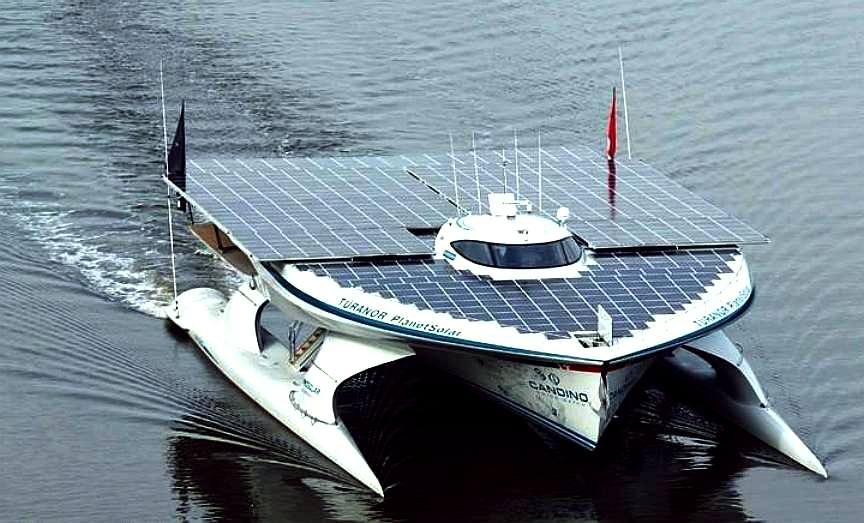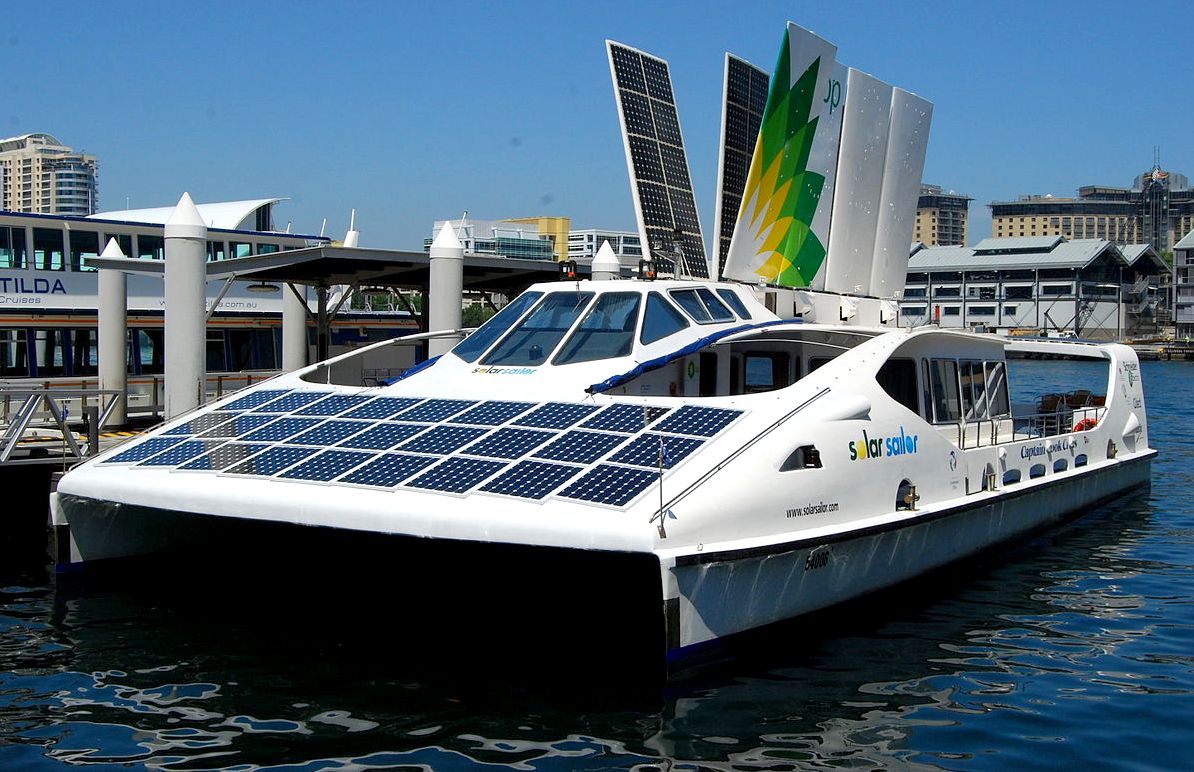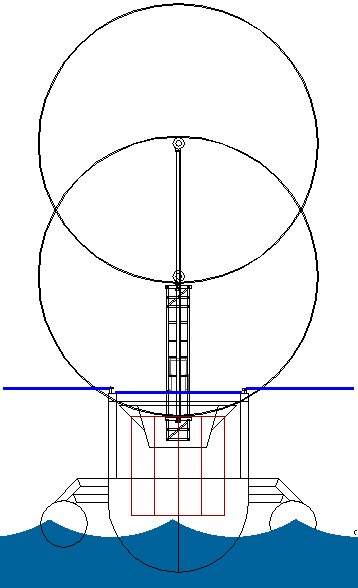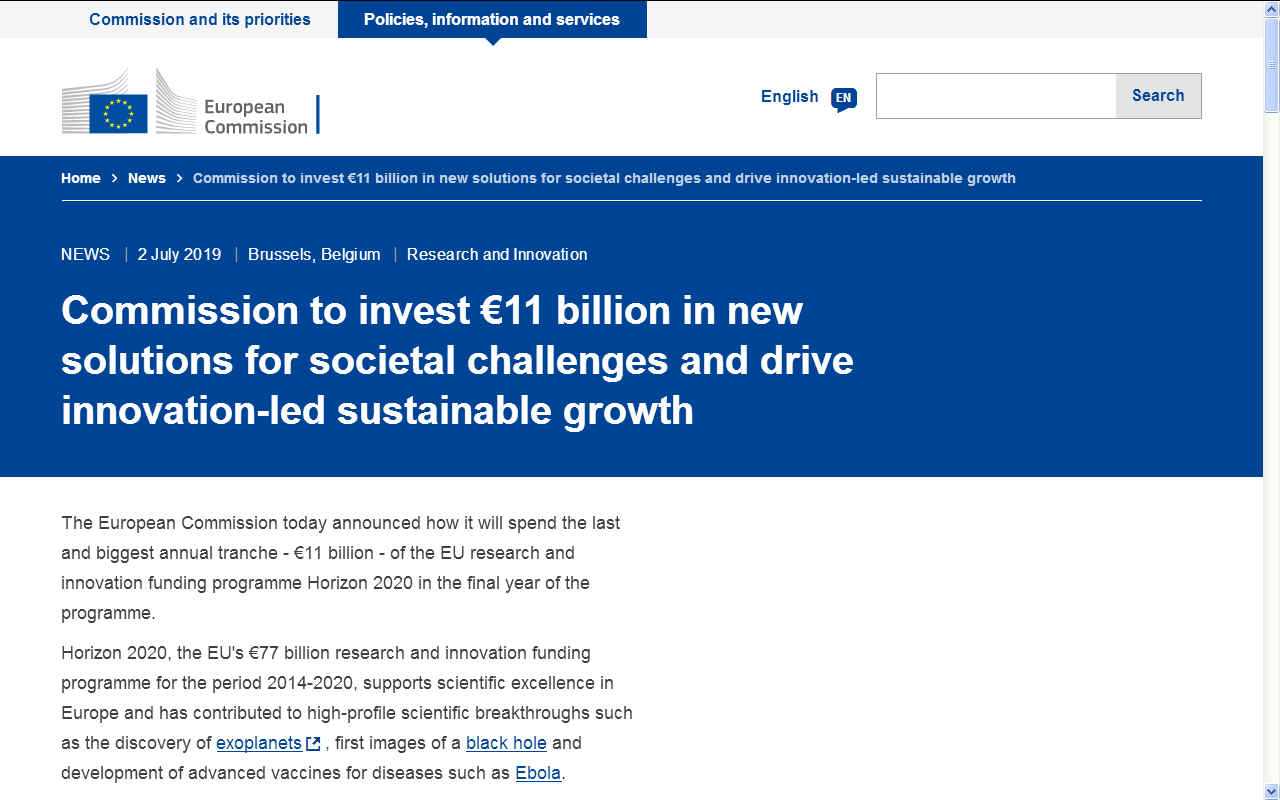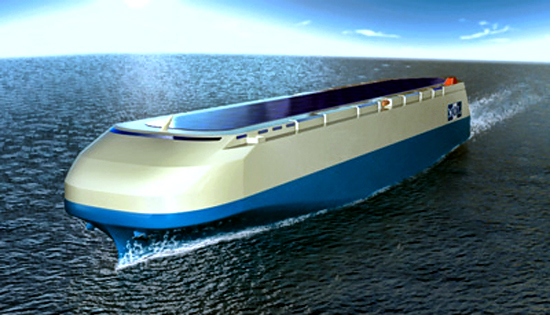|
H2020 DECARBONIZING LONG DISTANCE SHIPPING
Please use our A-Z INDEX to navigate this site where page links may lead to other sites
|
|
GUINNESS BOOK OF RECORDS - The first climate friendly blue water cruiser was the MS Turanor PlanetSolar (Switzerland) which circumnavigated the world in a westward direction from Monaco in 1 year 7 months and 7 days from 27 September 2010 to 4 May 2012. Why nobody has improved on the concept since then is a source of wonder. The problem with PlanetSolar in terms of take-up was the limited speed, that operators of commercial lines would be likely to see as uncompetitive.
Specific Challenge:
Overwhelmingly, long distance shipping accounts for the majority of GHG emissions and its decarbonisation is particularly challenging. It is expected that solutions will need to combine a variety of technologies, operational practices, energy sources and efficiency measures.
Furthermore, it will be essential to link any measures to robust data and measurements to better quantify their effectiveness and optimizations.
SOLAR WIND PIONEER - In 2001 Robert Dane's Solarsailor was the state of the art, but as with PlanetSolar in 2012, these boats were just too slow. It's all to do with capturing energy from nature more efficiently using a limited deck space and given displacement. The solar panel covered wings could only capture energy from one source effectively and the solar array area was too small. the solution is to increase solar panel area and use rotary sails that work with the solar panels, as with the system that is the subject of a Horizon 2020 consortium build from October 2019. See the 'Pacific Islands' container vessel below.
Excluding fuel development, a wide range of potential solutions can be proposed including the use of wind and solar assistance combined with efficiency improvements and other alternate energies. Solutions can be proposed in combination and should take into account the likely availability of infrastructure (including bunkering) on long distance routes.
Solutions should also take into account the CO2 equivalent from any reduction of black carbon emissions.
Costs, GHG reductions and any other potential waste streams shall be convincingly analysed using real data and testing programmes in addition to theoretical analysis.
Implications for the provision of new infrastructures shall be quantified and assessed.
Any reduction in GHG emissions that are founded upon innovative operational practices must be robustly benchmarked against the current state of the art, for example concerning ship routings and speeds through the use of “big” AIS “data“ and/or other satellite data.
A
robust communication strategy should be developed and implemented so as to ensure wider public engagement as well as a strong engagement with the global shipping sector and its customers.
ZERO CARBON SOLUTION - Although a potential solution to the problem, we suspect that this is not what the Commission are looking to tease out of the woodwork. They are probably hoping for a miracle cure that might be applied to conventional hulls, such as a new fuel or process that renders existing shipping zero carbon - and bully for that. Nevertheless, this is a possible way of reaching targets, or at least easing the pressure - and for that reason - it is put forward as a funding contender. Vessels that are solar and wind powered should (in our view) be developed alongside other incremental emission reduction means.
FULL SCALE OPERATIONAL PROTOTYPE - A prototype 50 meter container ship with 6 TEU standard containers shown in red rust inhibitor colour. They can be loaded from the rear if overhead loading is not available. An enhanced solar and wind turbine rig like this could generate 108kW (145hp) of energy peak. The average energy available 24/7 is likely to be around 62.4kW (83.6hp) and 70.7kW (94.8hp) or more in the trades. Rigged for passenger transport a vessel like this might weigh in @ 90 tonnes. An increase in solar panel area and bigger wind turbines will improve performance, but development will be longer and more costly. If this vessel performs as expected, the age of zero carbon shipping is getting closer.
The turbines can be raised and lowered to cope with different running conditions as seen on the end view left. The main hull is cylindrical for minimum wetted area, while the outriggers provide stability for a low drag hull. The superstructure is low to reduce frontal area and air drag. Another important feature is that the turbines may be furled for parking in ports or during storm conditions.
An alternative to constructing this vessel in aluminium alloy, is to purchase an existing cargo vessel that is due for retirement, and to retro-fit solar panels and wind generators, to be able to measure the savings. Operators of fleets might want to consider partnering to this project, maybe to provide a donor vessel. Please note that these drawings are Design Copyright © October 17&19 2019, Bluebird Marine Systems Ltd and Cleaner Ocean Foundation Ltd.
Expected Impact:
- bulk carriers, - tankers, - cruise ships and passenger liners
Establishment of robust benchmarks and methods which will provide wide confidence of the “real world” impacts from any specific GHG reduction measure including potential scalability and any secondary environmental impacts.
Improve the competitiveness of European maritime industries and shipping companies within the field of green shipping.
Increase the awareness and take up by end users.
Provide evidence to policy makers within EU and globally concerning infrastructure requirements necessary to meet the 2050 decarbonisations target.
Cross-cutting Priorities:
Carlos Moedas, Commissioner for Research, Science and Innovation, is quoted as saying:
Horizon 2020 is generating new knowledge and technologies, and has a strong economic impact. For every 100 euro we invest through Horizon 2020, we expect to add 850 euro to our GDP by 2030, creating millions of jobs for Europeans. That is why we have proposed €100 billion for the next Horizon Europe programme, to boost the EU's competitiveness, innovation capacities and scientific excellence.
Focusing on political priorities
This Work Programme will support the budget for 2018-2020 and the Commission’s political priorities, in the following areas:
- A low-carbon, climate resilient future: €3.7 billion - Circular economy: €1 billion - Digitising and transforming European industry and services: €1.8 billion - Security Union: €1 billion
In 2020, €206 million is earmarked for projects to transform sectors that are traditionally energy intensive into competitive, low-carbon and circular industries and to significantly lower their environmental footprint. €132 million will support the development and production in Europe of the next generation of batteries, as part of the drive towards a low-carbon, climate-resilient future. Ten new topics on plastics with a total budget of €135 million contribute in different ways to the EU Plastics Strategy. Artificial intelligence, which is at the core of today’s most promising breakthroughs, has a budget of €396 million and €116 million is earmarked for developing new capabilities for fighting and preventing cybercrime.
Boosting 'blue sky' research
At the same time, Horizon 2020 will continue to fund "curiosity-driven science" (often referred to as "blue sky science" or "frontier research"). The annual Work Programme of the European Research Council for 2020, adopted today, will enable support for excellent researchers with over €2.2 billion. Marie Skłodowska-Curie Actions, which fund fellowships for researchers at all stages of their careers, receive a boost with over €1 billion in total.
Enhancing international cooperation
This last Work Programme also strengthens international cooperation in research and innovation. It will invest over €550 million in 2020 in cooperation flagships in areas of mutual benefit. Examples include working with Africa on global health, food and nutrition security, with the US, Canada and Japan on clean energy, and with China on food production, biotech, energy, natural resources and urbanisation.
Bridging to Horizon Europe
Since the beginning of its mandate, the Juncker Commission has been working hard to give Europe's many innovative entrepreneurs every opportunity to thrive. The Commission launched the first phase of the European Innovation Council, to turn Europe's scientific discoveries into businesses that can scale up faster. The EIC Accelerator pilot announced in March will test a grant and equity blended financing model, paving the way for a fully-fledged European Innovation Council in the next EU research and innovation framework programme, Horizon Europe.
In anticipation of the expected structure and content of Horizon Europe, €209 million brings together actions on food and natural resources. Co-creating methods and approaches are being tested through cross-cutting calls on interdisciplinary challenges such as Competitive, Low Carbon and Circular Industries. To trial ways of simplifying participants’ experience, the use of Lump-sum pilots will be further expanded throughout the work programme. In addition, policy areas with increased prominence in the Horizon Europe proposal are addressed, such as smart buildings and airports, and the microbiome.
Background
Horizon 2020 is the EU's biggest ever research and innovation framework programme with a budget of €77 billion over seven years (2014-2020). While most research and innovation activities are still underway or yet to start, the programme is delivering.
In June 2018, for the budget period 2021-2027 the Commission proposed Horizon Europe, the next EU research and innovation programme with a budget of €100 billion. In March 2019 the European Parliament and the Council of the EU have reached a provisional agreement on Horizon Europe.
A - Z SAIL AND SOLAR ASSISTED BOATS & SHIPS
LINKS & REFERENCES
http://www.blue-growth.org https://ec.europa.eu/info/funding-tenders/opportunities/portal/screen/opportunities/topic-details/lc-mg-1-13-2020 https://ec.europa.eu/inea/en/news-events/events/horizon-2020-transport-info-day-0
Please use our A-Z INDEX to navigate this site
|
|
|
This website is provided on a free basis as a public information service. copyright © Climate Change Trust 2019. Solar Studios, BN271RF, United Kingdom.
|
